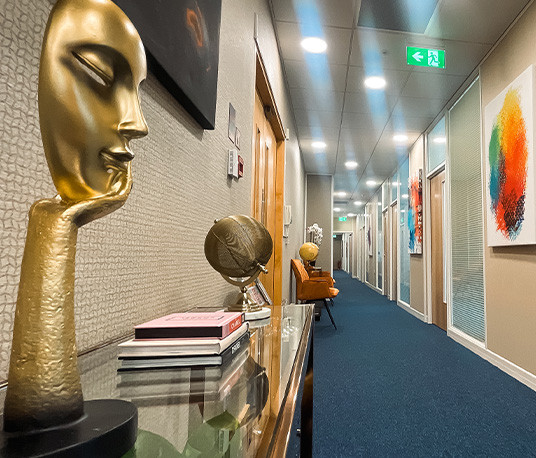
23 Nov What Is It Like Being Back In The Office In London?
As commuter trains fill up and local cafes start to experience the long-awaited lunch rush once again, it’s clear that (at least some) of London’s office workers are back in the capital. So, what is it like to be back in the office and what wider impact is office work having?
Helping the local economy
In 2019, the BBC reported that 800,000 people commuted to London each day. Each employee’s presence in the office doesn’t just affect that person. It impacts on the café where they buy their morning latte, the café or shop they buy lunch from, the pub they go to afterwork, and the train they get back.
With so many fewer commuters and with Londoners staying at home, the capital’s businesses took a hit. Now, along with the Welcome Back London campaign, Sadiq Khan is urging workers who are back in the office to make the most of the city, albeit with caution, saying:
“Whether you’re coming into the office, to meet friends and family or heading to London for a long weekend, you’ll be supporting our great businesses, cultural venues and attractions, and helping our city and the country get back on its feet.”
Socialising back in the office
Spending time at home might be comforting at times. However, it can also feel isolating. In fact, research shows that younger people aged 16-34 tend to feel less like they belong to their immediate neighbourhood than older people. Meanwhile, a 2019 survey revealed that over half of us hadn’t spoken to our neighbours in the last month.
While the two ideas are linked, social isolation isn’t a synonym for loneliness. In fact, some of us are content with a small network, while others still feel lonely when surrounded by people. Instead, loneliness is the feeling we get when our “network of relationships is smaller or less satisfying than desired”.
Moving back to the office certainly opens up the possibility of chatting with old friends and making new acquaintances on a regular basis, which can help some people feel more connected.
If you feel lonely and/or socially isolated and are unhappy, the charity Mind has useful resources.
Hybrid working
According to PwC, “77% of UK employees want a mix of face-to-face and remote working”. What this looks like varies greatly between businesses. For example, in one of the most flexible models, Spotify has introduced a new policy that they call Work from Anywhere.
The idea is for employees and managers to decide together what combination of remote and in-office work suits them most. What’s more, if an employee chooses to live in a city that isn’t near a Spotify office, the company will support them with a co-working membership.
The journey to work
One of the most obvious differences that comes with working at home, aside from chatting with colleagues virtually, is the lack of commute. Many of us saved incredible amounts of money and time by avoiding travel.
However, not everyone was pleased to skip the routine. As Jon Jachimowicz from the Organizational Behavior Unit at Harvard Business School explains, the commute gives us time to mentally prepare for work. He calls this “role-clarifying prospection”.
For those who are back in the office, transport options have increased. There is now a weekly cap for pay-as-you-go tube travel and commuters can also buy a flexi train season ticket, aimed at those who travel only a few days a week, helping hybrid workers save money.
Flexible office spaces
At The Brentano Suite, we offer serviced office suites in North London, making work easier and more comfortable for everyone back in the office. From meeting room hire to virtual office services, we can help you find the right office option for you. To find out more, have a look at our video tour.
See more insights on our blog pages.



Sorry, the comment form is closed at this time.